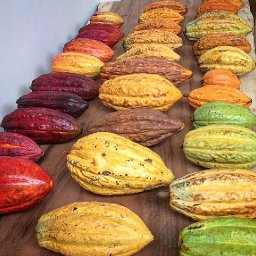Hi thanks guys for your advice, its reasurring to know that its not just me and these beans that have had this problem. Sebastian, you mentioned they will always eventually occur if improperly stored, how best would you recommend storing the cocoa beans in order to minimise the chances of these moths taking hold? Currently i store them inside and have a UV fly zapper which helps, but i wondered if there were better precautions to make.
I have just discussed concerns i had with Rentokil (hope these answers can help others):
1)are they poisonous/dangerous to health - No, but like any living organism there is always the chance of bacteria being transferred
2) Do they just attack cocoa or attack finished chocolate also - predominantly they will only attack cocoa beans as that is their prefferred food source
3) What do the eggs look like - white/creamy, but also tiny, will only see them through a microscope
4) Can you safely fumigate the coca beans leaving them safe to use - Yes but the process is very expensive, starting at £3,000. So need to outweigh the cost of destroying beans, fumigating the room (normal non-food safe approx £400) and starting fresh, against using food safe fumigation (£3,000) which leaves the beans safe to use.
5) Once fumigated whats the risk of return - always a risk, moths are very common problem although not many want to admit to having it for obvious reasons, but everyone will likely have a problem with the moths at some point when dealing with cocoa beans.
Any more advice and experience to this thread would be great as i think its a problem that might not be discussed enough, but a problem that it seems is inevitable.




